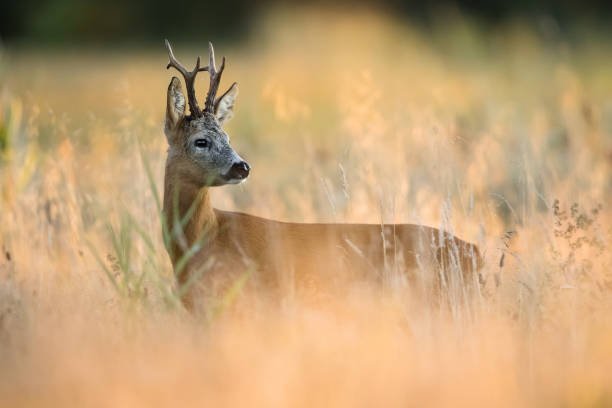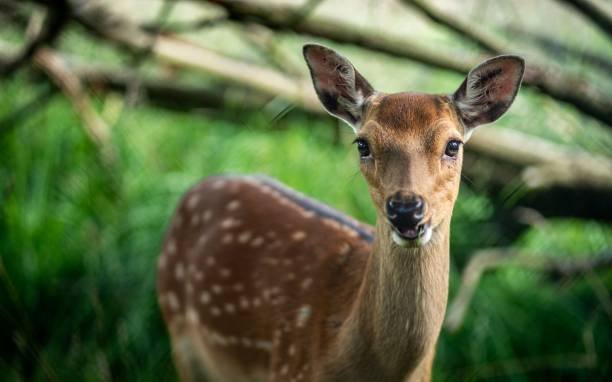How do I provide proper nutrition to a rescued deer?

Introduction:
In this article, we will explore the critical aspect of providing proper nutrition to a rescued deer, a task that demands careful attention and expertise. Rescuing a deer is a compassionate act, but ensuring its survival and well-being requires a deep understanding of their specific dietary needs. Providing adequate nutrition is not merely about offering sustenance; it involves replicating a wild deer’s natural diet to promote health and aid rehabilitation.
Addressing this challenge necessitates knowledge of their feeding habits, essential nutrients, and appropriate feeding techniques. This article delves into the intricacies of nourishing a rescued deer, offering insights and guidance for those dedicated to the welfare of these magnificent creatures.
Deer Dietary Requirements:
Understanding the dietary requirements of a rescued deer is paramount to ensuring its health and well-being. Wild deer predominantly consume a variety of plants, including grass, leaves, fruits, and nuts. These natural sources provide essential nutrients such as carbohydrates, proteins, vitamins, and minerals necessary for their growth and survival. In captivity, replicating this diverse diet is crucial. Proper nutrition involves providing a mix of fresh vegetables, high-quality hay, and specialized deer pellets. These pellets are formulated to mimic the natural diet, offering a concentrated source of nutrients.
Moreover, it’s vital to recognize the significance of hydration. Fresh and clean water should always be available to the rescued deer. Hydration is essential for digestion and overall bodily functions. Monitoring the deer’s dietary intake and adjusting it based on its health and developmental stage is key. For instance, fawns require a higher protein intake for growth, emphasizing the need for a balanced diet tailored to the specific life stage of the deer.
Selecting Suitable Food:
Selecting suitable food for rescued deer involves careful consideration of their natural diet and nutritional needs. Fresh, leafy greens like kale, spinach, and lettuce are excellent sources of vitamins and minerals. Fruits such as apples and berries can provide the necessary sugars and fibers. Additionally, high-quality hay acts as a vital component, aiding in digestion and dental health. It’s crucial to avoid feeding deer processed foods, sugary items, or foods high in salt, as these can be harmful and lead to various health issues.
Understanding seasonal changes in vegetation is also essential. In winter, when natural food sources are scarce, supplemental feeding becomes crucial. Providing nutrient-rich food during these periods helps the deer maintain their health and energy levels. Collaboration with local wildlife experts can offer insights into indigenous plants that are safe and beneficial for the rescued deer, ensuring they receive a well-rounded and suitable diet.
Feeding Techniques and Frequency:
Feeding techniques and frequency play a pivotal role in the nutritional care of a rescued deer. First and foremost, it’s essential to create a feeding routine. Deer are creatures of habit; establishing a consistent feeding schedule reduces stress and promotes a sense of security. Feeding should preferably occur at the same time and place each day, mimicking their natural behavior patterns.
Ensuring the feeding area is clean and free from contaminants is vital. Regularly cleaning food and water containers prevents the spread of diseases and maintains the deer’s overall hygiene. Hand-feeding should be minimized to prevent habituation in humans. Instead, providing food in feeding troughs or scattered in the enclosure encourages natural foraging behaviors, promoting physical activity and mental stimulation.
Furthermore, monitoring the deer’s body condition and weight is essential to adjust the feeding quantity and content accordingly. Consulting with a wildlife veterinarian or nutritionist can provide tailored advice, ensuring the rescued deer receives optimal nutrition for its specific needs. Adjustments in diet might be necessary during different life stages, such as pregnancy or illness, emphasizing the importance of regular assessments and adaptations in the feeding plan.
Nutritional Supplements:
Nutritional supplements play a vital role in ensuring a rescued deer receives well-rounded nourishment. These supplements are particularly crucial when the natural diet lacks specific nutrients. One of the common supplements provided to rescued deer is mineral blocks. These blocks provide essential minerals like calcium and phosphorus, aiding in bone health and overall growth. Additionally, vitamin supplements, especially Vitamin E and D, are often necessary, especially if the deer is not exposed to sufficient sunlight. Lack of sunlight can lead to a Vitamin D deficiency, which is critical for proper calcium absorption and immune function.
Probiotics are another essential supplement. These promote a healthy gut flora, aiding in digestion and nutrient absorption. In captivity, where a deer might not have access to the wide variety of plants it would consume in the wild, probiotics can assist in breaking down the provided food effectively. Furthermore, specialized protein supplements are vital, especially for young or debilitated deer. These supplements ensure they receive adequate protein crucial for growth, tissue repair, and immune function.
Monitoring Health and Diet:
Regular monitoring of a rescued deer’s health and diet is imperative for its well-being. Observing the deer’s behavior, body condition, and feces can provide valuable insights into its health. A healthy deer is active, alert, and maintains a healthy weight. Any sudden changes in behavior, like lethargy or aggression, might indicate health issues and require immediate attention.
Monitoring the diet involves not just observing what the deer eats but also assessing how much it consumes. Changes in appetite can signal health problems or stress. Additionally, keeping a record of the types and quantities of food consumed helps in adjusting the diet as needed. Regular checks for signs of malnutrition, such as a rough coat or visible bones, can indicate dietary deficiencies. Adjustments can then be made promptly, such as providing more protein or introducing new food items.
Regular veterinary check-ups are crucial. Veterinarians can conduct thorough examinations, including blood tests, to assess the deer’s overall health and nutritional status. They can also advise on specific dietary needs based on the deer’s age, health condition, and any deficiencies detected. Monitoring is an ongoing process, ensuring that the deer’s diet is continuously optimized to support its health and recovery.
Consultation with Wildlife Experts:
Consulting with wildlife experts is indispensable in providing proper nutrition to a rescued deer. Wildlife experts possess extensive knowledge about the dietary habits and nutritional requirements of deer in the wild. They can offer valuable guidance on replicating a wild diet in a captive setting, ensuring the rescued deer receives a nutritionally balanced diet.
Moreover, wildlife experts can provide insights into the behavioral aspects of deer, helping caregivers create environments that reduce stress and encourage natural behaviors. Stress reduction is vital because stress can impact the deer’s appetite and overall health. Experts can advise on creating enriching environments, including proper enclosures and socialization opportunities if there are other deer in captivity.
Wildlife experts can offer training to caregivers on proper feeding techniques, ensuring that the deer receives the right amount of food without becoming dependent on human interaction. Furthermore, in cases of specific health issues, experts can guide caregivers on specialized diets and supplements necessary for the deer’s recovery. Collaborating with these experts ensures that the rescued deer receives the best possible care, promoting its health, well-being, and successful reintegration into the wild when possible.
Conclusion:
I hope this exploration of providing proper nutrition to rescued deer has shed light on the intricate process of caring for these magnificent creatures. Understanding their dietary requirements, selecting suitable food, employing correct feeding techniques, and utilizing nutritional supplements are pivotal steps in ensuring their well-being.
Moreover, continuous monitoring, both of their health and diet, is essential for adapting to their evolving needs. Consulting with wildlife experts enriches this process, offering invaluable knowledge and expertise. By integrating these practices, we create an environment that not only supports their physical health but also encourages natural behaviors, fostering a higher chance of successful reintegration into the wild.
Through dedication, knowledge, and collaboration with experts, we can provide rescued deer with the optimal care they need, offering them a chance at a thriving life in their natural habitat.










Post Comment